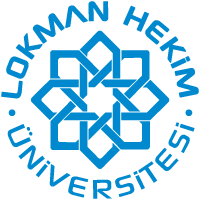| dc.description.abstract | Objectives: Uterine myomas (UM) are responsible for significant morbidity and have adverse effects on quality of life in women. Reactive oxygen species (ROS) and antioxidant enzymes (AOE), as well as sex steroids play important roles in the reproductive physiology processes. Thus, we aimed to investigate the role of oxidant-antioxidant status in UM by measuring the AOE activities and lipid peroxidation (LPO) levels. This is the first study assessing these parameters together in UM based on also menopausal status and evaluating possible correlations between AOE activities, LPO markers, tumor biomarkers, female reproductive system hormone levels, comprehensively.
Study design: The study group consisted of patients who have undergone surgical resection with confirmed pathology of uterine myoma (UM, n = 25) and divided into subgroups; premenopausal (UMpre) and postmenopausal (UMpost). Erythrocyte copper-zinc superoxide dismutase (Cu,Zn-SOD), catalase (CAT), glutathione peroxidase (GPx1) activities were measured along with plasma malondialdehyde (MDA) and urinary 8-epi-prostaglandin F2α (8-epi-PGF2α) levels in patients with UM. The obtained data were compared to the data of healthy individuals (C, n = 25) and its subgroups; premenopausal (Cpre) and postmenopausal (Cpost).
Results: All AOE activities were higher (∼40% for Cu,Zn-SOD, p = 0.003; ∼55% for CAT, p = 0.001; ∼15% for GPx1, p = 0.169) and the LPO levels were lower (∼60% for MDA, p = 0.011 and ∼45% for 8-epi-PGF2α, p = 0.055) in patients with UM vs control. Approximately similar alterations were observed in UMpre vs Cpre and in UMpost vs Cpost. A significant negative correlation between erythrocyte Cu,Zn-SOD activity and plasma MDA levels (r = -0.431, p = 0.005) was reported.
Conclusion: Decreased LPO levels might be the consequence of compensator high antioxidant enzyme activities against mild oxidative stress in the circulation of patients with UM. The marked negative correlation between erythrocyte Cu,Zn-SOD activity and plasma MDA levels also supported this finding. | en_US |















